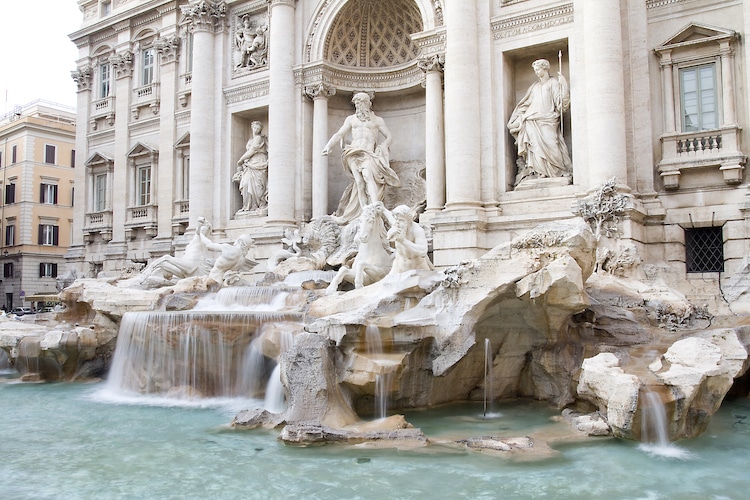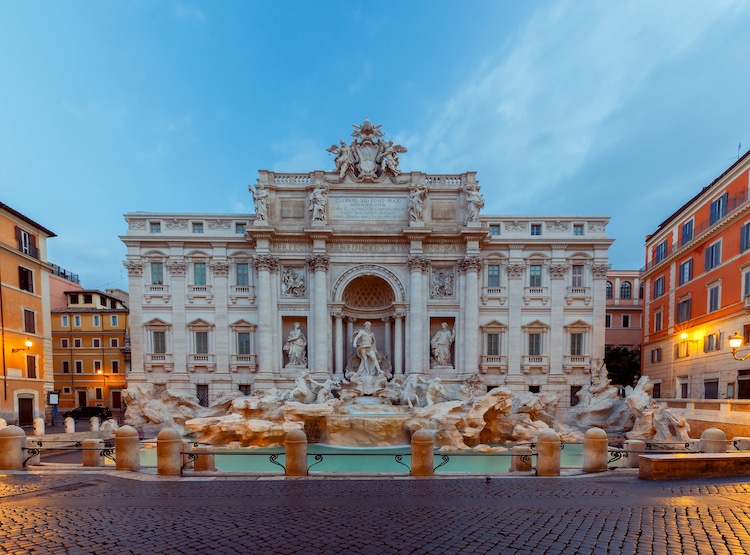Photo: revoc9/DepositPhotos
Every year, thousands of tourists flock to Rome to immerse themselves in art and culture.
Here, we explore the history and iconography behind the Trevi Fountain.
Who designed the Trevi Fountain?

Photo: revoc9/DepositPhotos
Salvi created a design around the theme taming of the waters, and construction began in 1732.
Although he died halfway through the fountain’s completion, it was eventually finished in 1752 by Giuseppe Pannini.
Its nameTreviderives from the Latin for trivium, meaning intersection of three roads.

Photo: natursports/DepositPhotos
Today, those streets are called Crocicchi Street, Poli Street, and Delle Muratte Street.
The fountain receives water from the Roman aqueduct calledAcqua Vergine, located about 14 miles away.
A new facade was erected in front of the original after construction on the fountain began.

Photo: pillerss/DepositPhotos
Oceanus is situated in the center of the design, standing underneath the arch created by the facade.
He is on a chariot that is being pulled by hippocamps, or Greek mythological sea horses.
Photo: DimaKozitsyn/DepositPhotos
Abundance is located to Oceanus’s left.

Photo: cigare/DepositPhotos
She is a lifesize female figure holding a horn with a toppled amphora at her feet.
Above all of the statues is a relief illustrating the history of the Roman aqueducts.
Frequently Asked Questions
Where is the Trevi Fountain?

Photo: DimaKozitsyn/DepositPhotos
The Trevi Fountain is located in the Piazza di Trevi in Rome, Italy.
When was the Trevi fountain built?
Construction on the Trevi Fountain began in 1732 and was completed in 1762.
Who built the Trevi fountain?
The Trevi Fountain was designed by Baroque architect Nicolo Salvi.